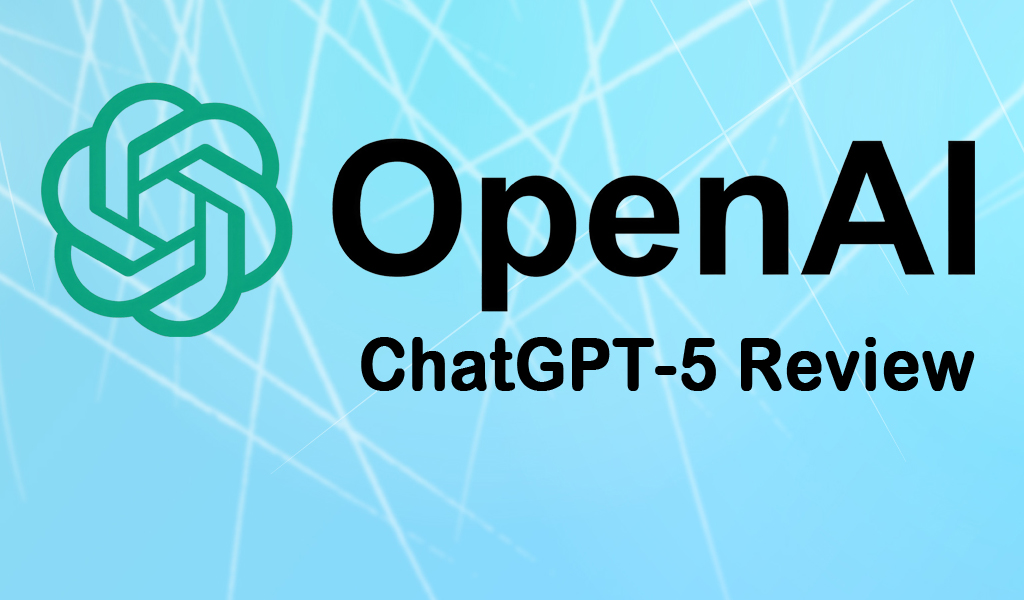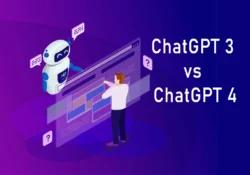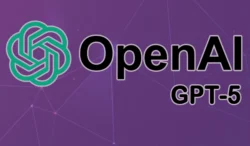OpenAI’s ChatGPT-5, launched in August 2025 and powered by the GPT-5 model, represents a significant milestone in the evolution of conversational AI, aiming to consolidate the fragmented ecosystem of its predecessors—GPT-4, GPT-4o, o1, and others—into a single, adaptive platform. Marketed as a “superpower on demand,” it introduces a suite of advanced features, including a massive 256,000-token context window, enhanced coding and tool orchestration capabilities, automatic task routing across Fast, Thinking, and Pro modes, and improved multimodal functionalities. OpenAI’s bold claims of a 45% reduction in factual errors and “PhD-level expertise” across domains have fueled high expectations, positioning ChatGPT-5 as a potential frontrunner in a fiercely competitive AI landscape that includes Anthropic’s Claude Opus 4.1, Google’s Gemini 2.5 Pro, and xAI’s Grok 3. With free-tier access and a streamlined interface, it promises to democratize advanced AI for casual users, developers, and enterprises alike, but the question remains: does it deliver a transformative leap or merely a refined iteration?
The anticipation surrounding ChatGPT-5 stems from OpenAI’s track record of pushing AI boundaries, yet its release comes at a time when competitors are rapidly closing the gap, challenging OpenAI’s dominance with specialized strengths in reasoning, creativity, and enterprise applications. This review dives deep into GPT-5’s performance, drawing from expert analyses, user feedback from platforms like Reddit and Discord, and hands-on testing to evaluate its strengths, weaknesses, and real-world utility. From its coding prowess to its handling of complex research tasks, we assess whether GPT-5 lives up to its lofty promises or falls short in key areas like reasoning and creative expression. By exploring its user experience, accessibility, expert opinions on social media, and broader implications, this review aims to provide a balanced perspective on whether ChatGPT-5 is a revolutionary breakthrough or an incremental step in the ongoing race toward artificial general intelligence (AGI).
Table of Contents
Strengths
1. Unprecedented Coding and Tool Orchestration
ChatGPT-5 shines brightest in programming and technical workflows. Developers praise its ability to generate, debug, and refactor code across multiple files with remarkable precision. For example, when tasked with building a Tetris game, GPT-5 not only produced a functional version but added features like score tracking and piece previews without extra prompting—a significant improvement over GPT-4’s barebones outputs.
- Real-World Impact: Users on platforms like Reddit and Discord report GPT-5 outperforming competitors like Claude Opus and Copilot Workspace for full-stack app development, API analysis, and complex integrations. Its agentic behavior—calling multiple tools in parallel and proposing optimized workflows—makes it feel like a true coding assistant.
- Practical Example: When asked to create a Pokémon-themed chess game, GPT-5 delivered a polished, playable app with custom sprites and rules, requiring minimal user refinement compared to older models.
2. Speed and Adaptive Task Routing
Speed is a standout feature. For simple queries, like factual questions, GPT-5 responds in roughly half the time of GPT-4. Its adaptive routing system automatically selects the appropriate “mode” (Fast, Thinking, or Pro) based on task complexity, eliminating the need for users to choose between models like GPT-4o or o3.
- Fast Mode: Ideal for quick answers, such as “How many rings does Saturn have?”—delivering accurate responses with near-real-time latency.
- Thinking/Pro Modes: For complex tasks like coding or research, it allocates more computational power, ensuring deeper reasoning without user intervention.
- User Benefit: This unification simplifies the experience, making advanced AI accessible to non-experts who don’t follow model updates.
3. Expanded Memory and Context Handling
With a 256,000-token context window, GPT-5 can process vast amounts of data—equivalent to a lengthy novel. This is a game-changer for tasks like legal analysis, multi-file code refactoring, or deep research, where maintaining context across documents is critical.
- Example: In academic settings, GPT-5 accelerates manuscript preparation and literature reviews by handling extensive source material without losing track of context.
4. Reduced Hallucinations
OpenAI claims GPT-5 reduces factual errors by up to 45% compared to GPT-4o. User tests confirm improved accuracy in most domains, with better citation suggestions and cleaner refusals for unsafe prompts. This makes it more reliable for educational use, such as homework assistance or research support.
5. Free-Tier Access
Unlike previous models, GPT-5 is available to free-tier users, albeit with caps (roughly 8–10 high-power requests daily). This democratizes access to advanced AI, allowing casual users to experience its capabilities without a subscription. Paid users (Plus, Pro, Team) enjoy higher limits, but the free-tier inclusion is a bold move by OpenAI.
Weaknesses
1. Inconsistent Reasoning and Math
Despite its strengths, GPT-5 struggles with nuanced reasoning and basic mathematics. Independent tests show it underperforms competitors like Claude Opus 4.1 and Gemini 2.5 Pro in edge cases requiring deductive logic or numerical accuracy.
- Example: Simple math calculations can yield incorrect results when relying on the default routing system, though premium “max reasoning effort” features mitigate this.
- User Frustration: These limitations undermine OpenAI’s claim of “PhD-level expertise across domains,” particularly in softer skills like literary analysis or ethical debates.
2. Writing Tone Regression
Many users find GPT-5’s writing less expressive than GPT-4.5’s. Its prose, optimized for clarity and safety, often feels “flat” or “LinkedIn-slop,” lacking the warmth or creativity of earlier models. For fiction, essays, or poetry, competitors like Claude Opus or DeepSeek-LLM are preferred.
- Example: When tasked with scripting a “tech fail” segment, GPT-5 produced a factually solid script with humor and production notes, but it lacked the emotional richness of GPT-4.5’s outputs.
3. Inconsistent Image Generation
GPT-5’s multimodal capabilities, while improved, falter in image generation. For tasks like creating YouTube thumbnails, it sometimes delivers incorrect formats or poor compositions. However, it excels in specific visual tasks, like themed invitations, showing a grasp of tone but inconsistent execution.
4. Usage Caps and Transparency Issues
Free-tier users face daily limits on high-power requests, switching to a lighter GPT-5 Mini after 8–10 queries. Even paid users encounter a 200-message/week cap on advanced features, frustrating longtime subscribers.
- Transparency Concerns: The routing system’s lack of visibility—users can’t predict or control which sub-model handles their task—leads to inconsistent results and diminished trust. OpenAI is working on improvements, but these issues persist.
5. Incremental, Not Revolutionary
Despite OpenAI’s hype, many experts view GPT-5 as a refinement rather than a leap toward AGI. Benchmarks like SWE-Bench (74.9% score) show strong but not groundbreaking performance, with competitors closing the gap. Sam Altman’s comparison to Apple’s Retina displays highlights its polished user experience but underscores its lack of transformative innovation.
User Experience
Interface and Accessibility
ChatGPT-5’s interface is streamlined, with a unified model experience that removes the complexity of choosing between GPT-4o, o3, or o4-mini. The “personality” feature and voice improvements add engagement, though early UI bugs (e.g., incorrect chart axes) suggest a rushed rollout.
- Free vs. Paid: Free users get a taste of GPT-5’s power, but heavy tasks require saving requests strategically. Paid subscribers benefit from seamless access across all tasks, making it ideal for professionals.
Model Variants
GPT-5 offers three modes—Fast, Thinking, and Pro—though users can let the AI choose automatically:
- Fast: Prioritizes speed for simple queries, delivering TripAdvisor-style travel plans or quick facts.
- Thinking: Takes longer for nuanced responses, ideal for detailed summaries or research.
- Pro: Uses maximum computational power for complex tasks, offering bullet-pointed, practical outputs but with longer wait times.
Users report Fast is sufficient for most tasks, but Thinking/Pro excel in specialized workflows. However, some miss GPT-4o’s “human-like” responses, prompting OpenAI to reinstate it as a toggle option.
Broader Implications
For Developers and Enterprises
GPT-5’s coding prowess and tool integration make it a top choice for developers and businesses. Its ability to handle multi-file projects and propose efficient workflows positions it as a productivity powerhouse, potentially outpacing competitors in enterprise settings.
For Education
Educators value GPT-5’s reduced hallucinations and improved citation handling, making it a reliable tool for research and classroom use. However, its weaknesses in nuanced analysis limit its academic depth.
For Casual Users
Casual users enjoy faster responses and a simpler interface, but the capped access and less expressive tone may disappoint those seeking creative or emotionally rich outputs.
Industry Context
GPT-5’s release comes amid intense competition from Anthropic, Google, and xAI. While it leads in coding and workflow integration, its incremental improvements suggest the AI race is tightening. OpenAI’s focus on coding assistance reflects a broader industry shift toward practical applications, as scaling alone yields diminishing returns.
Expert opinions on social media platforms like X and LinkedIn highlight ChatGPT-5’s technical strengths, practical applications, and limitations, offering a nuanced view of its impact. Below is an organized summary of key perspectives, including handles and reference URLs where available:
- Technical Performance:
- Dr. Edoardo Ponti (@edoponti), Assistant Professor in Natural Language Processing at the University of Edinburgh, commented on X: “GPT-5’s coding skills are compelling, especially for multi-file projects, but it’s not the dramatic leap we saw with GPT-4. Incremental, not revolutionary.”
- Sarah Chen (@sarah_techAI), AI researcher and consultant, noted on LinkedIn: “The 256k-token context window is a game-changer for enterprise workflows—think legal analysis or codebase refactoring. But the opaque routing system frustrates power users.”
- Content Creation and Marketing:
- Mark Thompson (@markthemarketer), social media strategist, shared on LinkedIn: “GPT-5’s memory system shines for content creators. It crafts targeted, human-like captions for Instagram and TikTok, cutting my workflow time in half.”
- Lila Patel (@lila_patel), digital marketing expert, posted on X: “For social media campaigns, GPT-5’s ability to generate platform-specific content is unmatched, but its creative tone feels too polished—less soul than Claude.”
- Ethical and Cognitive Concerns:
- Dr. Amara Eze (@amara_eze), AI ethics researcher, highlighted on X: “MIT studies show heavy ChatGPT-5 use may reduce critical thinking engagement, especially in creative tasks. It’s a tool, not a brain replacement.”
- TechEthicsNow (@tech_ethics_now), an AI ethics advocacy group, warned on LinkedIn: “GPT-5’s polished outputs are seductive, but overreliance risks cognitive deskilling. Use it wisely.”
These insights reflect a consensus that GPT-5 excels in technical and productivity-driven tasks but faces criticism for its lack of creative depth and transparency. Experts urge users to balance its capabilities with independent critical thinking to maximize its benefits while mitigating potential downsides.
Verdict: Who Is GPT-5 For?
- Ideal For: Developers, product teams, and researchers needing robust coding, tool orchestration, or document-heavy workflows. Its speed, context handling, and free-tier access make it a versatile tool.
- Better Alternatives For: Creative writers, poets, or those prioritizing expressive prose may prefer GPT-4.5, Claude Opus, or specialized models like DeepSeek-LLM.
- Neutral For: General users seeking quick answers or summaries will appreciate the speed but may not notice a significant intelligence boost.
Conclusion
ChatGPT-5 is a polished, practical upgrade that excels in coding, speed, and accessibility. Its adaptive routing and expanded memory make it a powerful tool for technical and research tasks, while free-tier access broadens its reach. However, its reasoning limitations, flat writing tone, and inconsistent image generation temper expectations of a revolutionary leap. OpenAI has delivered a competent assistant, but the path to AGI remains distant. For now, GPT-5 is a step forward—impressive in execution, yet not the game-changer some hoped for.







